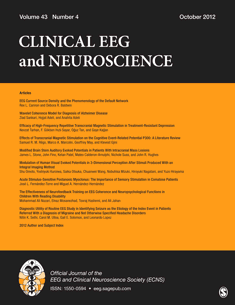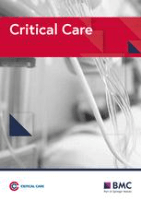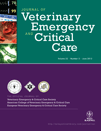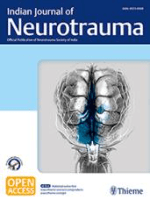
Neurocritical Care
Scope & Guideline
Transforming insights into practice for neurocritical patients.
Introduction
Aims and Scopes
- Management of Acutely Ill Neurological Patients:
The journal emphasizes evidence-based strategies for managing conditions such as traumatic brain injury, intracerebral hemorrhage, and subarachnoid hemorrhage, focusing on both medical and surgical interventions. - Neuromonitoring Techniques:
There is a significant focus on various neuromonitoring techniques, including intracranial pressure monitoring, continuous EEG, and advanced imaging modalities, to assess cerebral function and guide therapy. - Biomarkers and Predictive Models:
Research on biomarkers and predictive models is highlighted, aiming to identify risk factors and improve prognostication in neurocritical care settings. - Multidisciplinary Approaches:
The journal promotes multidisciplinary collaboration among neurologists, neurosurgeons, intensivists, and allied health professionals to enhance patient care and outcomes. - Ethics and Policy in Neurocritical Care:
Discussions on ethical considerations and policy implications in neurocritical care, including brain death determination and end-of-life decision-making, are integral to the journal's scope. - Emerging Technologies:
The journal explores the application of emerging technologies, such as artificial intelligence and machine learning, in predicting outcomes and personalizing treatment in neurocritical care.
Trending and Emerging
- Artificial Intelligence and Machine Learning:
There is an increasing trend towards integrating artificial intelligence and machine learning in predicting outcomes and personalizing treatment strategies for neurocritical patients. - Patient-Centered Care Models:
Emerging themes emphasize the importance of patient-centered care, including shared decision-making processes and understanding patient and family perspectives in neurocritical settings. - Telemedicine and Remote Monitoring:
The rise of telemedicine and remote monitoring technologies is gaining traction, particularly as a response to the COVID-19 pandemic, showcasing innovative approaches to managing neurocritical patients. - Focus on Long-Term Outcomes:
Recent studies are increasingly addressing long-term outcomes and quality of life for survivors of neurocritical care, shifting the focus from immediate survival to holistic recovery. - Interdisciplinary and Multimodal Treatment Approaches:
There is a growing interest in interdisciplinary and multimodal treatment approaches that combine pharmacological, surgical, and rehabilitative strategies to improve patient outcomes.
Declining or Waning
- Traditional Pharmacological Approaches:
There appears to be a waning interest in traditional pharmacological treatments for neurological emergencies, with a shift towards exploring novel therapies and non-pharmacological interventions. - Basic Neuroscience Research:
The focus on basic neuroscience research, while still relevant, seems to be declining in favor of more applied clinical studies that directly impact patient management in acute settings. - Generalized Guidelines Without Specificity:
There is a noticeable reduction in the publication of broad clinical guideline papers that do not cater to specific populations or conditions, indicating a trend toward more tailored and condition-specific recommendations. - Historical Perspectives:
Papers focusing on historical perspectives in neurocritical care have decreased, suggesting a shift toward contemporary issues and future directions rather than retrospective analyses. - Single-Center Studies:
The prevalence of single-center studies is declining, as there is a growing emphasis on multicenter collaborations to enhance the generalizability of findings.
Similar Journals

Neurotrauma Reports
Illuminating the path to improved neurotrauma treatments.Neurotrauma Reports, published by MARY ANN LIEBERT, INC, stands at the forefront of disseminating pivotal research within the evolving field of neuroscience. With an emphasis on both cellular and molecular neuroscience and developmental neuroscience, this open access journal, initiated in 2020, aims to bridge gaps in knowledge concerning neurotrauma, a critical area impacting brain health and recovery. Although currently positioned in the lower quartiles as per the 2023 category rankings, the journal provides invaluable insights that foster academic dialogue and collaboration among researchers, professionals, and students alike. Through its commitment to open access, Neurotrauma Reports ensures that cutting-edge research is accessible to a diverse audience, enhancing the visibility of emerging studies and fostering innovation within the field. Readers can explore this journal to stay updated with the latest findings, methodologies, and reviews that are shaping our understanding of neurotrauma, ultimately contributing to improved treatments and outcomes.

CLINICAL EEG AND NEUROSCIENCE
Advancing the Frontiers of Neurological ResearchCLINICAL EEG AND NEUROSCIENCE, published by SAGE Publications Inc, stands as a pivotal journal in the fields of neurology and neuroscience, with a focus on the latest research and advancements in clinical electroencephalography and neurophysiology. Since its inception in 1970, the journal has provided a platform for rigorous scholarly work, offering valuable insights into neurological disorders and EEG technology. With its current categorization in the Q2 and Q3 quartiles across various subfields of medicine and neurology, it ranks prominently in the Scopus database, emphasizing its significance in academic discourse. The journal's commitment to disseminating high-quality research is underscored by its open access options, facilitating broader accessibility to its published findings. For researchers, clinicians, and students alike, CLINICAL EEG AND NEUROSCIENCE remains an essential resource for keeping abreast of the evolving landscape of neurological studies.

Neurochirurgie
Empowering Neurosurgeons with Cutting-Edge KnowledgeNeurochirurgie, published by MASSON EDITEUR, stands as a prominent peer-reviewed journal in the fields of neurology and surgery, reflecting its commitment to advancing clinical practices and surgical innovations. With an impressive history dating back to 1955 and a convergence period extending to 2024, this journal serves a vital role in disseminating comprehensive research and updates relevant to both medical practitioners and researchers. Neurochirurgie holds a respectable Q3 ranking in clinical neurology and a Q2 ranking in surgery as of 2023, positioning it within the upper echelons of medical journals; its Scopus rankings further underline its growing influence, particularly in the surgical domain. Despite its non-open access model, the journal offers a platform where high-quality, rigorously vetted studies can be accessed, fostering an environment of knowledge exchange that is essential for the ongoing development of neurosurgical practices. For researchers, professionals, and students alike, Neurochirurgie presents an invaluable resource for staying at the forefront of neurological research and surgical advancements.

Journal of Korean Neurosurgical Society
Unlocking the Future of Patient Care through NeuroscienceThe Journal of Korean Neurosurgical Society, with its ISSN 2005-3711 and E-ISSN 1598-7876, stands as a paramount resource in the field of neurosurgery, bridging clinical practice and cutting-edge research in both neurology and multidisciplinary neuroscience. Published by the Korean Neurosurgical Society, this open-access journal has been committed to disseminating invaluable knowledge to the global scientific community since its establishment in 1972. Located in Seoul, South Korea, the journal underscores its prominence with impressive quartile rankings—Q3 in Neurology (Clinical), Q3 in Neuroscience (Miscellaneous), and Q2 in Surgery for 2023. Its standing in Scopus rankings further emphasizes its impact, with a ranking of #195/551 in Medicine: Surgery and #235/400 in Medicine: Neurology (Clinical). By fostering a platform for innovative findings and advancements in surgical techniques, the Journal of Korean Neurosurgical Society aims to support professionals, researchers, and students alike in their pursuit of excellence and knowledge in neurosurgery and related fields, ensuring a brighter future for patient care and scientific inquiry.

CRITICAL CARE
Elevating standards in critical care practice.CRITICAL CARE is an esteemed peer-reviewed journal dedicated to advancing the field of critical care and intensive medicine, published by BMC. Since its inception in 1998, it has been a prominent open-access platform that allows for the dissemination of high-quality research, fostering collaboration among researchers, healthcare professionals, and students globally. With a notable impact factor and ranking in the top quartile (Q1) of critical care and intensive care medicine, CRITICAL CARE occupies a vital role in disseminating cutting-edge findings and innovative practices that can significantly enhance patient outcomes in critical care settings. The journal not only encourages submissions of original research, clinical trials, and reviews but also emphasizes the importance of interdisciplinary approaches to critical care management. Positioned in the United Kingdom, CRITICAL CARE's commitment to open access ensures that its valuable content is readily available to a worldwide audience, reflecting its mission to bridge knowledge gaps and empower professionals in the pursuit of excellence in critical healthcare.

CRITICAL CARE MEDICINE
Shaping the Future of Critical Care PracticesCRITICAL CARE MEDICINE is a premier journal dedicated to the advancement of knowledge and practice in the field of critical care and intensive care medicine. Published by Lippincott Williams & Wilkins, this distinguished journal has been at the forefront of medical research since its inception in 1973, and it continues to offer insights into the latest developments and innovations in critical care. With a remarkable ranking of #5 out of 110 in Scopus' Critical Care category and a 95th percentile rating, CRITICAL CARE MEDICINE is a leading source for high-impact research, reviews, and clinical studies. The journal is recognized as a Q1 publication, underscoring its authoritative presence within the academic community. Researchers and clinicians are encouraged to engage with cutting-edge findings that aim to improve patient care and outcomes. Although the journal is not open access, it remains an essential resource for professionals seeking to enhance their understanding and application of critical care practices.

Brazilian Neurosurgery-Arquivos Brasileiros de Neurocirurgia
Empowering Neurosurgeons through Accessible KnowledgeBrazilian Neurosurgery-Arquivos Brasileiros de Neurocirurgia, published by GEORG THIEME VERLAG KG, is a distinguished peer-reviewed open access journal that has been making significant contributions to the field of neurosurgery since its transition to open access in 2015. This Brazilian journal, which is accessible to a global audience, aims to disseminate high-quality research articles, reviews, and case reports that enhance the understanding and practice of neurosurgery and clinical neurology. Despite its current ranking in the Q4 category for both neurology and surgery in 2023, the journal is committed to improving its impact and accessibility for researchers, medical professionals, and students worldwide. As an important platform for innovative ideas and discussions, it takes pride in publishing scientifically rigorous content that informs and shapes the future of neurosurgical practices. With the rise of open access publishing, Brazilian Neurosurgery aligns itself with contemporary trends, making vital research readily available to its diverse readership while nurturing academic collaborations within the neurosurgical community.

JOURNAL OF CLINICAL NEUROSCIENCE
Shaping the Future of Neurology Through ResearchJOURNAL OF CLINICAL NEUROSCIENCE is an esteemed publication dedicated to advancing the field of neurology and related medical disciplines. Published by ELSEVIER SCI LTD, this journal serves as a vital resource for researchers, clinicians, and educators, providing a platform for the dissemination of high-quality research findings since its inception in 1994. With a noteworthy impact factor and ranked within the Q2 and Q3 categories across various medical specialties, including neurology and surgery, the journal positions itself at the forefront of clinical neuroscience. Although it operates under a traditional subscription model, the journal’s commitment to publishing rigorous scientific work ensures that it remains an integral reference for anyone involved in the diagnosis, treatment, and understanding of neurological disorders. Readers can access a diverse array of articles that not only highlight current research trends but also foster the exchange of innovative ideas in clinical practice.

JOURNAL OF VETERINARY EMERGENCY AND CRITICAL CARE
Empowering practitioners through cutting-edge research.JOURNAL OF VETERINARY EMERGENCY AND CRITICAL CARE, published by WILEY, is a leading journal in the field of veterinary science, specifically focusing on emergency medicine and critical care for animals. With an impact factor that underscores its significance in the field, this journal serves as a crucial resource for veterinary professionals, researchers, and students dedicated to advancing the care of animals in critical conditions. Since its inception in 1991, the journal has continually contributed to the knowledge base and methodological advancements in veterinary emergency practices, consistently ranking in the Q1 category for veterinary sciences, as per the latest Scopus Ranks. Located in the United Kingdom, the journal is committed to disseminating high-quality, peer-reviewed research that addresses the challenges and innovations in veterinary critical care. With its goal to enhance clinical outcomes through evidence-based practices, the JOURNAL OF VETERINARY EMERGENCY AND CRITICAL CARE remains an essential platform for scholarly communication and collaboration in veterinary medicine.

Indian Journal of Neurotrauma
Connecting researchers and clinicians in neurotrauma.Indian Journal of Neurotrauma is a premier Open Access journal published by GEORG THIEME VERLAG KG, dedicated to advancing the field of neurotrauma through rigorous research and comprehensive scholarly discourse. With an ISSN of 0973-0508 and E-ISSN 2213-3739, this journal provides a vital platform for researchers, clinicians, and students to share findings and insights on the multifaceted aspects of neurotrauma, including its clinical management, epidemiology, and innovative treatment approaches. Since adopting an Open Access model in 2020, the journal has enhanced its accessibility, ensuring that groundbreaking studies and critical reviews are available to a wider audience, thereby fostering collaboration and innovation. The Indian Journal of Neurotrauma aims to serve as a comprehensive resource for those involved in public health, neurology, and trauma care, making significant contributions to the understanding and treatment of neurotrauma globally.